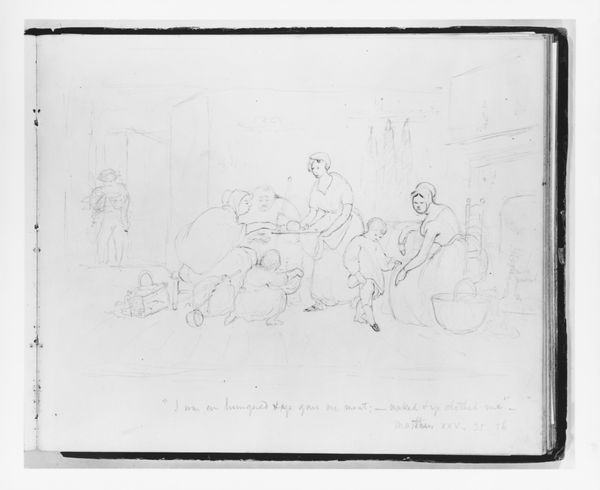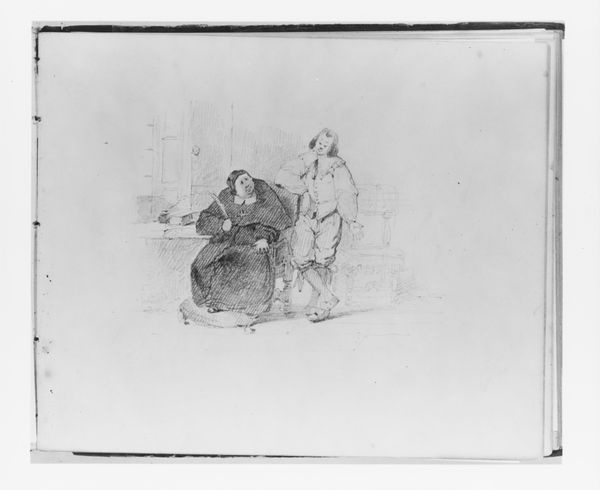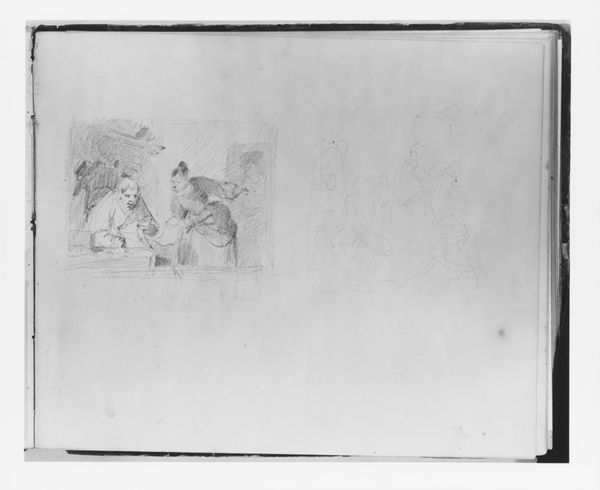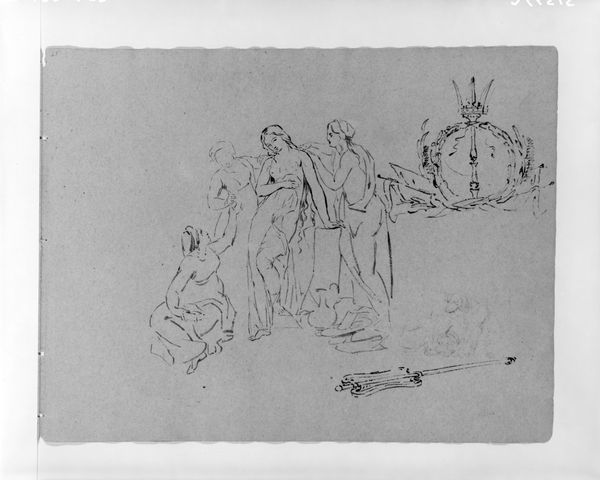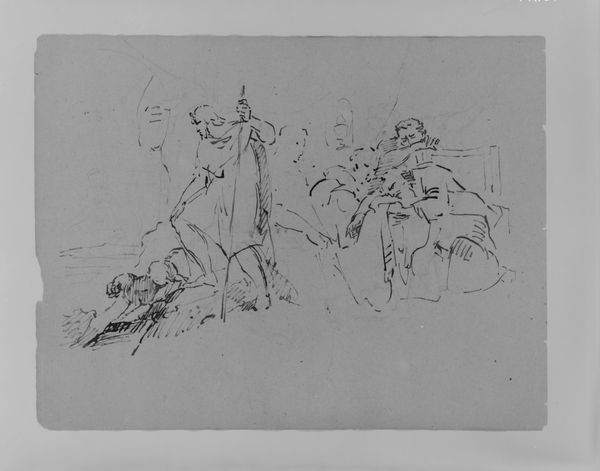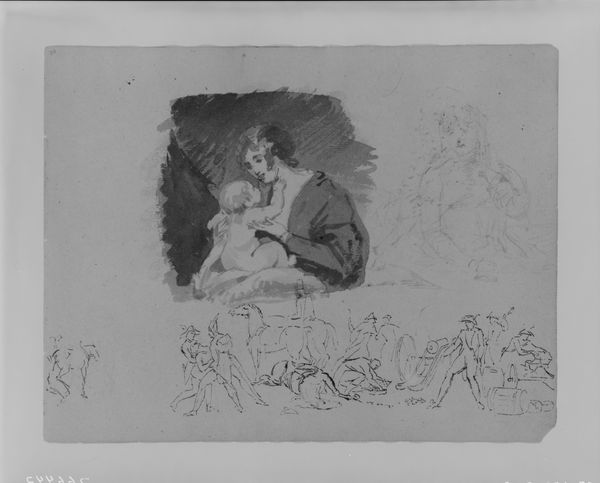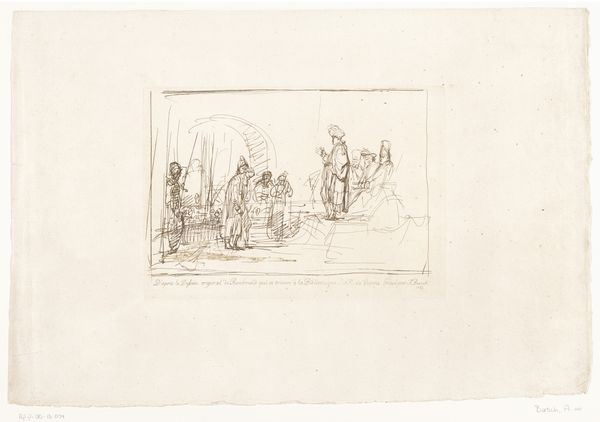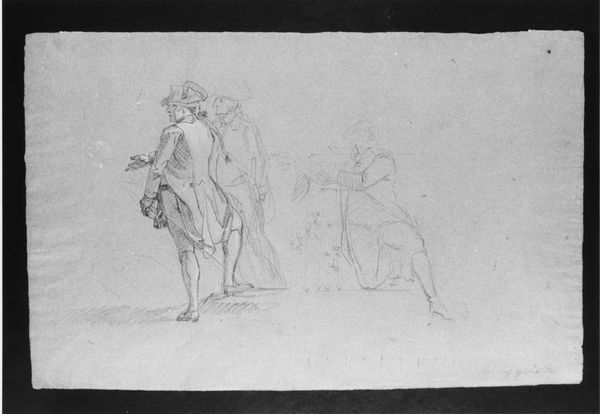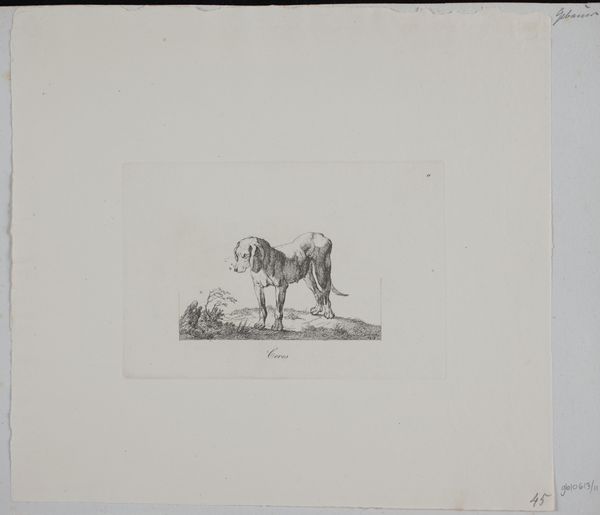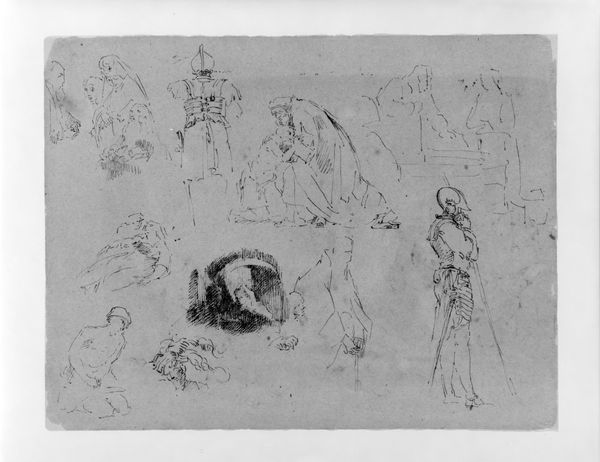
Two Men on a Workbench with a Vice (from Sketchbook) 1834 - 1838
0:00
0:00
drawing, pencil
#
portrait
#
drawing
#
pencil sketch
#
romanticism
#
pencil
#
men
#
genre-painting
#
realism
Dimensions: 6 5/8 x 8 in. (16.8 x 20.3 cm)
Copyright: Public Domain
Curator: This drawing by Francis William Edmonds, likely from sometime between 1834 and 1838, titled "Two Men on a Workbench with a Vice," captures a seemingly mundane scene, rendered delicately in pencil. It is part of a sketchbook currently held at the Metropolitan Museum of Art. Editor: My first thought? A sort of quiet resignation permeates the scene. The muted tones and almost imperceptible rendering of labor hint at a world weary of relentless demands. The slouch of the seated man, the other hunched at the vice, a powerful contrast. Curator: It's interesting you say that, because, looking at this as a materialist, I'm immediately drawn to the workbench itself and the vice. The workbench clearly functions as the site where labor occurs. Think of all the other works the artist must have studied to arrive at such accuracy. The choice to emphasize these objects positions the drawing within a larger dialogue about craft and industry during the 19th century. Editor: Precisely! This isn’t just about observation. Edmonds captures men at the intersection of labor, class, and a nascent American identity. I see themes of social hierarchy reflected in their poses and relative placement; it begs questions about what work they were involved in, who owned the means of their production. We might consider their lack of agency, given the vice grip upon them metaphorically. Curator: I’m curious about the actual making process. Given it's a pencil sketch, a readily available, affordable material, does that perhaps comment on the democratizing potential of art, even as it depicts laborers seemingly caught in a cycle of work? Did the artist attempt to democratize fine art practices? Editor: Possibly, yes, a step toward accessibility—but one framed within the social realities of the time. The “romanticism” style indicated in the metadata could mean these men were presented to solicit feelings of sympathy, if not outright pity, from Edmonds' intended audience, highlighting the distance between the viewer and the working class subject. This is, like so much art from the time, tied inextricably to the issue of spectatorship. Curator: Viewing Edmonds' process in terms of materials and social class complicates notions of Romanticism that may traditionally emphasize escape and fantasy, pushing it into social commentary instead. I appreciate how analyzing the method offers deeper understanding, while simultaneously connecting to the narrative's larger context, providing a different kind of accessibility. Editor: Absolutely, and in engaging with these narratives we invite present viewers into relevant discourses around issues like labor, inequality, and power. Thank you for unpacking this intriguing glimpse into history!
Comments
No comments
Be the first to comment and join the conversation on the ultimate creative platform.

